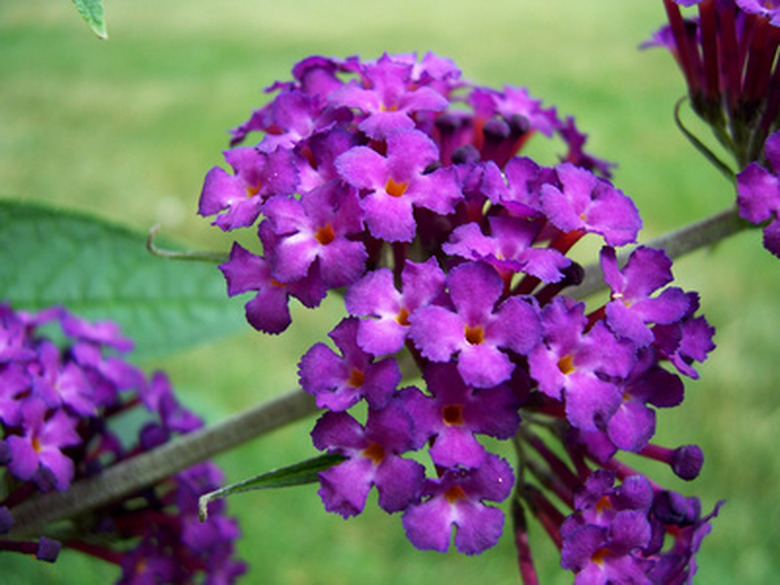How To Kill The Roots Of A Butterfly Bush
The butterfly bush, also known as the summer lilac or orange eye, originated in China and provides sustainable nectar to adult butterflies. Requiring almost no upkeep, it is virtually indestructible. The qualities that make it easy to cultivate also allow it to become invasive in the landscape. It crowds out other plants and provides an inhospitable environment to native insects and animals. Because of this, you may want to remove a butterfly bush. They can be quite hard to kill and often will re-sprout from their roots if you cut them to the ground. In order to eradicate it, you will need to kill the roots of a butterfly bush.
- The butterfly bush, also known as the summer lilac or orange eye, originated in China and provides sustainable nectar to adult butterflies.
- The qualities that make it easy to cultivate also allow it to become invasive in the landscape.
Step 1
Use a pruning saw or shears and cut the butterfly bush down to the ground. Leave a few inches of stump above the ground for a means of applying herbicide.
Step 2
Apply a non-selective herbicide like Roundup to the remaining stump. Non-selective herbicide will kill any plant it comes in contact with. The stump will absorb the herbicide and transport it to the roots, where it will achieve a total kill.
Step 3
Watch for shoots around the stump. If any appear, immediately treat them with herbicide.
- Use a pruning saw or shears and cut the butterfly bush down to the ground.
- Apply a non-selective herbicide like Roundup to the remaining stump.
Step 4
Dispose of all branches by taking them to a landfill, putting them in your yard waste container, or by burning them.
Butterfly Bush & A Butterfly Weed
A mature butterfly bush typically reaches 6 to 10 feet tall with an equal spread. Butterfly weed, on the other hand, is a perennial flower reaching only 1 to 3 feet tall. Where color is concerned, the many cultivars of butterfly bush have butterfly weed beat. White, different shades of pink, purple and blue are all commonly seen in nurseries and garden centers. Fertile, well-drained soil is an essential requirement of the butterfly weed, although butterfly bush will tolerate nearly every soil condition except for wet, particularly once it's established. Butterfly weed is tricky to transplant, but readily self-seeds — a decent patch of this colorful, native perennial is possible after a few years from just one plant. Throughout summer, butterflies, moths and other pollinators will swarm butterfly bushes in grand displays of fluttering color. As a native species, the butterfly weed is an important host plant to native wildlife.
- Dispose of all branches by taking them to a landfill, putting them in your yard waste container, or by burning them.
- Fertile, well-drained soil is an essential requirement of the butterfly weed, although butterfly bush will tolerate nearly every soil condition except for wet, particularly once it's established.
Things Needed
- Pruning shears or saw
- Non-selective herbicide
- Gloves
Warning
Wear gloves when handling herbicides. They can be an irritant to unprotected skin.
Tip
Alternatively, you may dig up the entire butterfly bush. Ensure you get all the roots when digging or the bush may re-sprout from any roots left in the ground.
